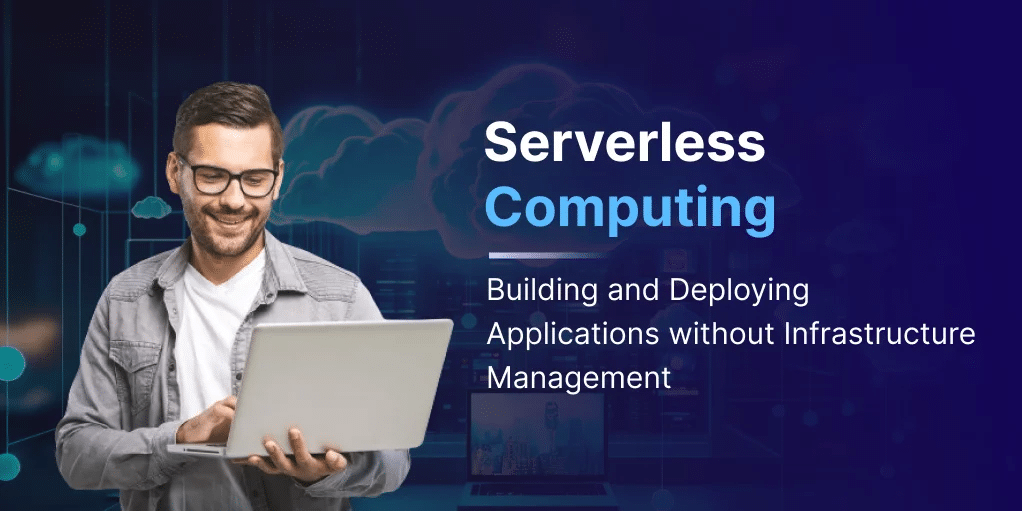Serverless computing has emerged as a game-changer in the world of cloud computing, offering developers a revolutionary way to build and deploy applications without the burden of managing underlying infrastructure. This paradigm shift has enabled businesses to focus more on their core functionality and less on the operational overhead of server management. We will explore what serverless computing is, its benefits, and how to build and deploy applications in a serverless environment.
What is Serverless Computing?
Serverless computing, often referred to as Function as a Service (FaaS), is a cloud computing model that allows developers to run individual functions or pieces of code in response to events without the need to manage servers. In a serverless architecture, cloud providers like
(AWS), Microsoft Azure, and Google Cloud Platform (GCP) take care of server provisioning, scaling, and maintenance, allowing developers to focus solely on writing code.

Key Benefits of Serverless Computing
- Reduced Operational Complexity: With serverless computing, there is no need to worry about server provisioning, patching, or scaling. Cloud providers handle these tasks, allowing developers to concentrate on coding and application logic.
- Cost-Efficiency: Serverless computing follows a pay-as-you-go model, where you are only charged for the actual compute resources used. This eliminates the need to pay for idle server time, making it a cost-effective option, especially for applications with varying workloads.
- Automatic Scalability: Serverless platforms automatically scale your functions in response to increased workloads. This ensures that your application remains responsive even during traffic spikes.
- Faster Development: Serverless architectures encourage faster development cycles as developers can focus on writing code rather than managing infrastructure. This agility is particularly beneficial for startups and businesses looking to iterate quickly.
- High Availability: Most serverless platforms offer built-in redundancy and high availability, reducing the risk of downtime due to server failures.
Building Applications in a Serverless Environment
Now, let’s delve into the steps involved in building and deploying applications in a serverless environment.
- Choose Your Cloud Provider: The first step is to select a cloud provider that offers serverless computing services. AWS Lambda, Azure Functions, and Google Cloud Functions are some of the popular options. Consider factors like pricing, ecosystem, and integration capabilities when making your choice.
- Design Your Architecture: Plan your application architecture around the serverless paradigm. Break down your application into smaller functions or microservices, each responsible for a specific task. This promotes modularity and scalability.
- Write Code: Develop your application code as functions or serverless components. These functions should be stateless and designed to run independently. Serverless platforms support multiple programming languages, so choose the one that suits your team’s expertise.
- Set Up Event Triggers: Define the events that trigger your functions. Events can be HTTP requests, database changes, file uploads, or scheduled tasks. Configure event sources to invoke the corresponding functions when events occur.
- Test Locally: Most serverless platforms provide tools and emulators for local testing. Validate your functions and code locally before deploying to the cloud.
- Deploy Your Functions: Use the cloud provider’s tools or command-line interfaces to deploy your functions. Specify function configurations, including memory allocation and timeout settings.
- Monitoring and Logging: Implement logging and monitoring solutions to gain insights into your application’s performance. Cloud providers offer services like AWS CloudWatch, Azure Monitor, and Google Cloud Logging for this purpose.
- Security: Implement security best practices, such as access controls, encryption, and authentication, to protect your serverless application and its data.
- Continuous Integration and Deployment (CI/CD): Set up a CI/CD pipeline to automate the deployment process. This ensures that your application can be updated quickly and reliably.
- Optimize for Cost: Regularly analyze your usage and costs to optimize your serverless application. Consider configuring auto-scaling policies and using reserved instances to reduce expenses.
Serverless computing has ushered in a new era of cloud development, allowing developers to focus on coding and innovation while offloading infrastructure management to cloud providers. The benefits of reduced complexity, cost-efficiency, and automatic scalability make serverless a compelling choice for a wide range of applications. By following best practices and leveraging the capabilities of serverless platforms, businesses can accelerate development cycles and deliver highly available and cost-effective applications to their users. As serverless technology continues to evolve, it is poised to play an even more significant role in the future of cloud computing.




